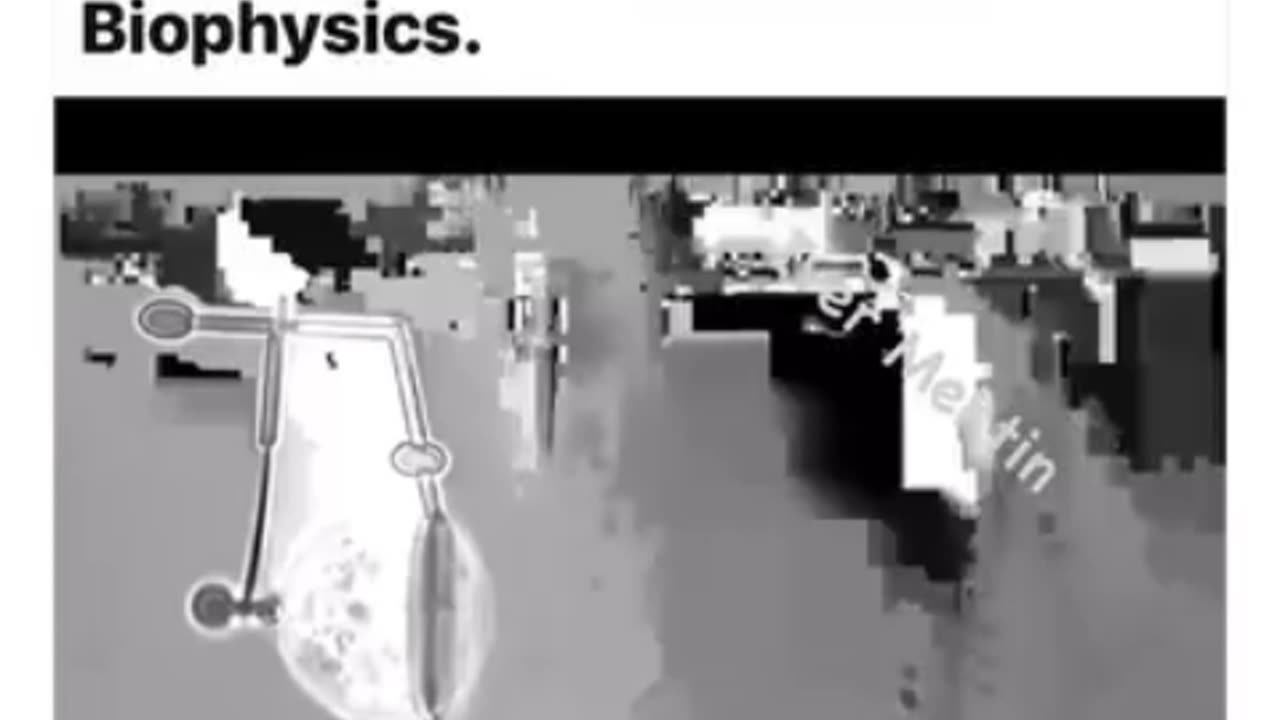Premium Only Content

The Rise of Nano Bots: Crafting Cyborgs and Redefining Life Itself
In recent years, the fusion of nanotechnology and biology has taken an unprecedented leap. No longer the stuff of speculative fiction, nano bots—minuscule machines programmed to interact with biological systems—are now the frontier of technological evolution. Footage from the Szeged Institute of Biophysics has recently revealed a breakthrough: electron microscope visuals that show nano bots capturing living cells and assembling them into an unprecedented cyborg-like entity. This revelation has deep implications for medicine, ethics, and the very definition of life itself.
Nano Bots: The New Frontier of Biotechnology
Nano bots are incredibly small machines, engineered at a scale so minute they can interact directly with cells, viruses, or even DNA. These machines are crafted from advanced materials that allow them to operate in harsh or biologically sensitive environments, where they can perform tasks such as manipulating cells, targeting specific genes, or delivering drugs to precise locations within the body. Their function extends beyond medical applications; nano bots have opened the door to new biotechnological breakthroughs in environmental engineering, industrial processes, and human enhancement.
The footage from the Szeged Institute demonstrates a significant milestone in nano bot development: these robots can work together to capture cells and create bio-synthetic structures, effectively building what appears to be a cyborg entity—a fusion of living and non-living materials. This technological marvel signifies that we are on the verge of creating hybrid life forms that blend the organic and synthetic, pushing the boundaries of what it means to be alive.
The Cyborg Lifeform: Blurring the Line Between Biology and Technology
The nano bots’ ability to construct cyborg-like structures represents a profound shift in the way we think about life. These hybrid beings—part machine, part biology—could one day revolutionize everything from medicine to industrial labor. Imagine a cyborg immune system that enhances the body’s ability to fight disease or self-repairing tissues embedded with nano bots that can regenerate after injury.
These nano bots do not merely function as passive tools but as active agents capable of transforming living systems. The footage showcases how nano bots capture living cells and begin assembling them into a cybernetic organism. The fact that machines could one day create, enhance, or even control life forms forces us to reconsider traditional views of biology and challenge our perceptions of what it means to be human.
Applications in Medicine: Precision at the Cellular Level
One of the most promising applications of nano bots is in medicine. The ability to manipulate cells on such a small scale means that targeted drug delivery, gene therapy, and even organ regeneration could become viable options for treating diseases. Nano bots could enter the body, detect and repair damaged tissues, or directly attack cancer cells, offering a more effective and less invasive form of treatment than current medical technologies.
The cyborg creatures that nano bots can assemble also raise the potential for bio-augmentation—enhancing human biological systems with artificial components. Nano bots could create artificial immune systems or integrate with the brain to enhance cognitive abilities. These developments not only suggest a future where diseases are cured at the molecular level but also where human beings themselves are enhanced beyond natural limits.
Ethical Considerations: The Thin Line Between Innovation and Overreach
The rise of nano bots and cyborg life forms is not without its ethical challenges. As these technologies advance, they blur the lines between organic life and artificial constructs, raising questions about identity, free will, and the nature of existence. What rights would a cyborg entity possess? How do we ethically manage the creation of life forms that are part biological and part technological? These questions challenge our understanding of personhood and force us to confront the limits of human control over life.
Moreover, nano bots could be weaponized or used for surveillance, raising the specter of bio-political control. If these machines can infiltrate biological systems, they could also be programmed to influence behavior, monitor individuals, or even alter thoughts. The potential for misuse is staggering, and as with any powerful technology, there must be stringent regulations and ethical frameworks to prevent abuses.
Nano Bots and Consciousness: Can Artificial Lifeforms Think?
A particularly intriguing aspect of cyborg life forms is the possibility that these hybrid entities could develop their own form of consciousness. While traditional machines are purely mechanical, the fusion of biological cells with nano bots could give rise to unexpected emergent properties, perhaps even forms of intelligence. What happens when artificial intelligence and biological systems are so intertwined that the boundary between them is blurred? Could nano bots provide the groundwork for artificial lifeforms that possess self-awareness?
These questions are not just theoretical; they point to the profound implications of consciousness and life as we know it. If nano bots can create complex organisms, they could also serve as the basis for a new kind of life, one that challenges the philosophical boundaries of biology and technology.
The Future of Life: Hybrids, Enhancement, and Beyond
As nano bots continue to advance, we may find ourselves in a world where biological enhancement, synthetic life forms, and cybernetic organisms become the norm. The footage of nano bots creating cyborg entities gives us a glimpse into a future where life itself can be engineered, enhanced, and potentially controlled in ways that were once unimaginable. This technology could radically alter how we live, work, and evolve as a species, leading to new forms of biological interaction and potentially a new era of transhumanism.
However, this technology also comes with a warning. We must tread carefully in how we integrate technology with life. As we move forward into this brave new world, we must ensure that the line between innovation and ethics is not crossed and that humanity remains in control of the powerful tools it has created.
Conclusion: The Dawn of a New Evolution
The electron microscope footage showing nano bots capturing cells and forming cyborg creatures marks a watershed moment in our understanding of life and technology. As nano bots begin to manipulate and create biological systems, the boundary between the living and non-living is increasingly blurred. These technological advances will revolutionize medicine, biology, and human capabilities, but they also challenge us to reconsider our relationship with life itself.
The rise of nano bots and cyborg organisms is the dawn of a new evolutionary era—one where machines and biological systems work in harmony to shape the future of life on Earth. Yet, as we stand on the precipice of this new age, we must confront the ethical, philosophical, and existential implications of creating hybrid life forms and ensure that humanity does not lose control of its greatest invention.
-
 15:02
15:02
FragmentsOfTruth
13 days agoUnveiling the Climate Hoax: CO2 Myths, Weather Wars, and Global Control Agendas
466 -
 LIVE
LIVE
LFA TV
12 hours agoLIVE & BREAKING NEWS! | THURSDAY 11/13/25
3,006 watching -
 21:21
21:21
Jasmin Laine
19 hours agoTrump NAMED in Epstein Files—Poilievre LEAVES Canada’s Media in ASHES
44.2K65 -
 19:24
19:24
Tactical Advisor
18 days agoFolding EDC Axe | CRKT Provoke X
17.3K1 -
 18:54
18:54
T-SPLY
18 hours agoDHS Sending More Federal Agents to Chicago - Pritzker Has Meltdown!
24.8K12 -
 1:17:19
1:17:19
LIVE WITH CHRIS'WORLD
14 hours agoTHE WAKE UP CALL - 11/13/2025 - Episode 5
20.7K5 -
 2:05:11
2:05:11
BEK TV
1 day agoTrent Loos in the Morning - 11/13/2025
25.4K -
 14:34
14:34
Lady Decade
21 hours ago $1.55 earnedSolving The Mystery of the Illegal Star Trek Console - Gaming History Secrets
20.6K9 -
 3:59:47
3:59:47
The Bubba Army
1 day agoWHAT's NEW IN THE EPSTEIN FILES? - Bubba the Love Sponge® Show | 11/13/25
57.4K8 -
 30:24
30:24
ZeeeMedia
16 hours agoTrump Exonerated in New Epstein Drop? Intel Assets Infiltrating Media | Daily Pulse Ep 142
26.5K15